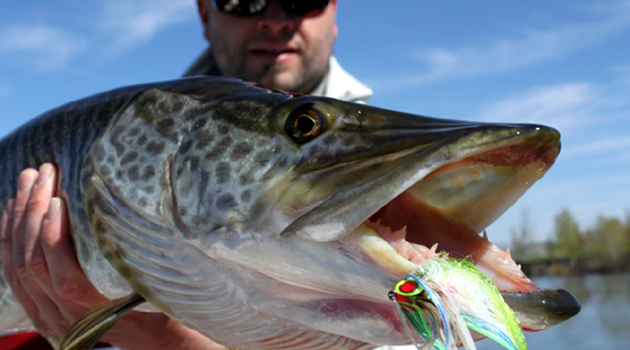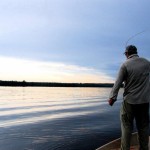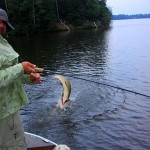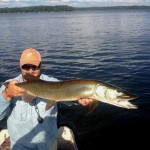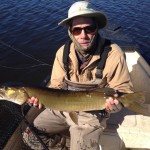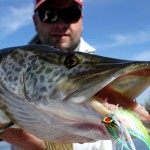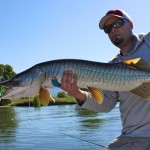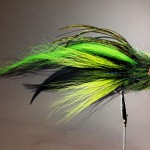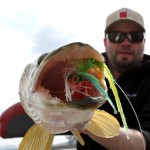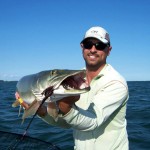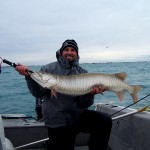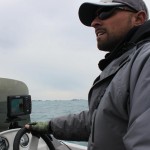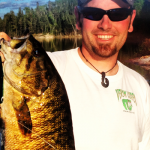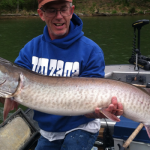By Chris Willen
Large lakes are intimidating for musky fly fishers. That really shouldn’t be the case for the musky angler, but in reality it truly is. Fly fishing for musky in still waters can be as effective as it is on rivers and streams. Musky fishing is growing exponentially in terms of participating anglers, establishing fisheries, and techniques. With growth comes more anglers taking advantage of musky fisheries.
Using the fly as a tool to show the fish different non-mainstream presentations can be a huge advantage, especially on those tough days. It’s no secret that fish can get conditioned to certain lures. I personally feel that large soft plastics and flies don’t fall into that category. Every musky fisherman can tell you about a Bulldawg or a Medussa, but what can they tell you about flies? They don’t have the answers or solutions like the fly guys do!
That’s where you can really shine on tough days on the water, by fly fishing. Often times, in lakes, you are working your flies much like a big rip style bait. But a fly will give off a different vibration to the fish. So different that these fish might have the urge to take a taste. They also kick and move differently than large plastics – something different that they haven’t seen 15-20 times already that day. Now that sounds hypocritical since I just said that I don’t feel they get conditioned to plastics. But remember, we’re talking about tough bite days and maybe, just maybe that one bite that will make your day will come from something that’s just outside the box.
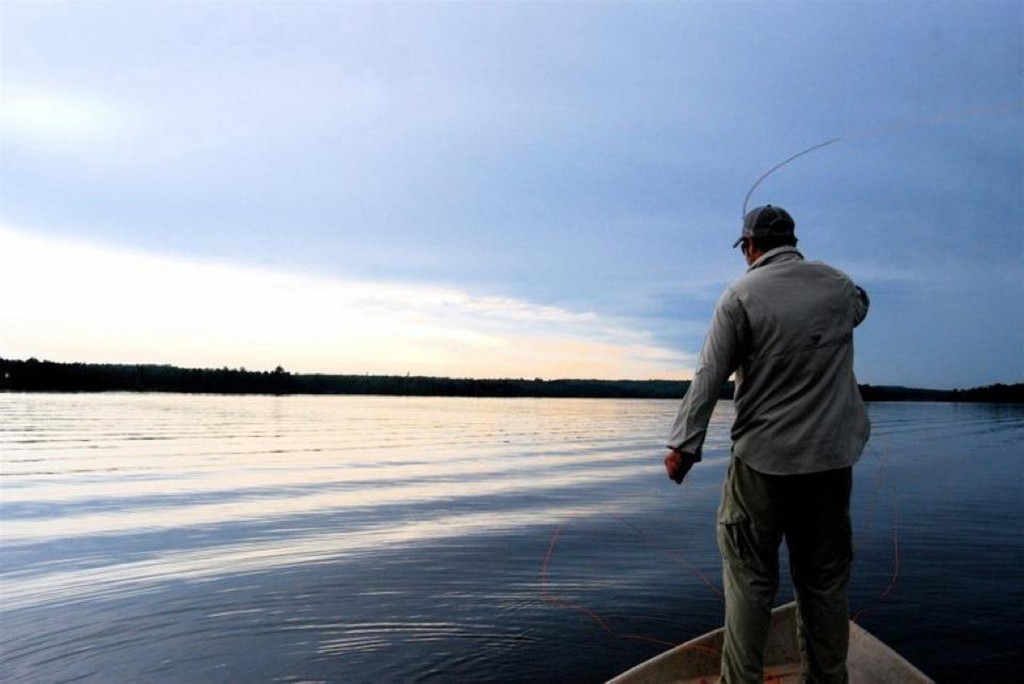
Northern Wisconsin Lake Fisheries
Northern Wisconsin has been a destination for musky hunters since man first settled into the Badger State. This is where I spend my spring, summer and fall seasons, guiding musky fly anglers. Much of my personal fishing time is spent on some bigger lakes and flowages in the area such as Namakagon Lake, Holcombe Flowage, and the Dairyland Flowage. Each system is heavily fished for muskies by traditional gear anglers. Despite the angling pressure I’ve found great success chasing musky in either lakes with the fly rod. We’ve had days out on Namakagon where anglers have observed us boating multiple fish. They’re often compelled to idle over to find out what we were doing differently, mostly because they hadn’t seen a fish all day. To me this means that these high pressured muskies are conditioned to the everyday lures. I’m not fishing different areas than these anglers. Rather, just with a completely different technique and presentation. The fly is something these pressured fish have rarely seen before.
If you spend any time on lakes that are heavily fished by other anglers, it would behoove you to pick up a 10 weight fly rod and test this hypothesis. One big fish, one big bite and you’ll be convinced that from time to time you need to stand out from the crowd. I strive to get the traditional gear fisherman to eventually see the fly rod and musky flies as another tool to their fishing. Musky anglers don’t need to wear a vest and a fedora in order to use a fly rod. Just the mentality that what you’re doing will work and could possibly get you that giant you’ve been hunting your entire life for.
Western USA Reservoir Fisheries
Nick Granato, of Salt Lake City, Utah, is a tiger musky angler. He’s a Rainy’s Flies innovator, and has boated a high number of tigers every year. The majority of these fish are taken with the fly rod. It’s no secret that Utah is limited on their reservoirs that support tiger musky. Therefore, the ones that do hold these fish tend to get pressured most often by anglers. Another obstacle to overcome in Western reservoirs is water fluctuation.
“In low water years, baitfish stack up around the large boat docks because a lot of their safe cover areas are exposed and out of the water,” says Granato. “The tigers will stack up right with the baitfish and pick them off as they please. The flies really pay off in these situations,” he says.
Handcrafted articulated flies, unlike a lot of other baits, have the abilities to hang in the strike zone longer. This gives muskies ample time to creep up and get their feed on. The food base of many Western reservoirs is primarily crappie, sunfish, trout, invasives such as carp and illegally stocked goldfish, and other small baitfish. Granato likes to use smaller 4 to 8 inch flies to imitate these food sources. His Ghetto Tramp pattern can be found at several fly shops and is one of his go-to patterns. Fly anglers are known for their “match the hatch” mentality. When the musky are smaller in size, baitfish oriented flies can really put some fish in the boat.
Great Lakes Fisheries
One last lake example comes from my friend, Eric Grajewski, of St. Clair Shores, Michigan. Eric spends a lot of time of Lake St. Clair, chasing musky, just like a lot of other musky anglers do. Over the past few years Lake St. Clair has become busier boat traffic due to the popularity of muskies and its world class fishery. This doesn’t stop Eric from putting good numbers of musky in the net.
Grajewski primarily fishes flies and admits, “It can get a little discouraging watching the gear guys boating fish when I’m not getting bites. But then the fish seem to change their moods and I’ll be getting eats on flies when those guys are struggling.”
Grajewski will have days on the lake where he boats multiple fish while his friends throwing rubbers and bucktails or trolling don’t land a fish. “So why not have the fly rod in your arsenal so you can bust it out when nothing else seems to be working for you,” he says.
A technique Grajewski utilizes when the musky are on the high-speed burning bucktail bite will be the two-hand retrieve. This technique is effective when muskies are on that high speed bite. I personally use this technique a lot during the summer months in northern Wisconsin as well. Basically, you cast out the fly and tuck the fly rod up in your armpit and do a hang-over-hand retrieve, never stopping the fly. Burning the fly triggers strikes because the bait is fleeing away from them at a high speed. Sometimes you don’t want those fish to have time to make decisions. Just react.
Open-mindedness Catches Fish
No Matter where you’ll be chasing muskies this year, it doesn’t hurt to have options in your boat. Adding the fly rod to your quiver of tricks will assist you, putting more fish into the boat this season. Whether you have it for tough days or use it as a tool for converting followers into biters, I feel you’ll be a more well-rounded musky angler if you experiment with the fly rod. That big musky might just make that mistake of eating a big articulated fly over seeing the same Cowgirl or Bulldawg day after day.
In order to fly fish for lake resident muskies, you don’t need to be a master caster to get the flies in the zone for musky. Just ask FHQ editor, Andrew Ragas. If you’re using the fly rod as a tool to convert lazy following fish, it’s a lethal throwback option. Forty to fifty foot casts is all you need to be in the lake fishing game.
With today’s modern fly lines, casting at these moderate distances is easier said than done. A little practice makes perfect, and you’ve got something unique that a lot of other boats on your favorite musky waters won’t have.
Any musky fisherman can tell you one bite turns the day around. Expand your arsenal and increase the number of fish in your boat. Trying new techniques is what’s going to help you put five, ten, maybe even fifteen more musky into your boat this year. I said it before and I’ll say it again, it can be done successfully. Give it shot. You don’t need to be on a river or stream, and in a drift boat, to fly fish for muskies.
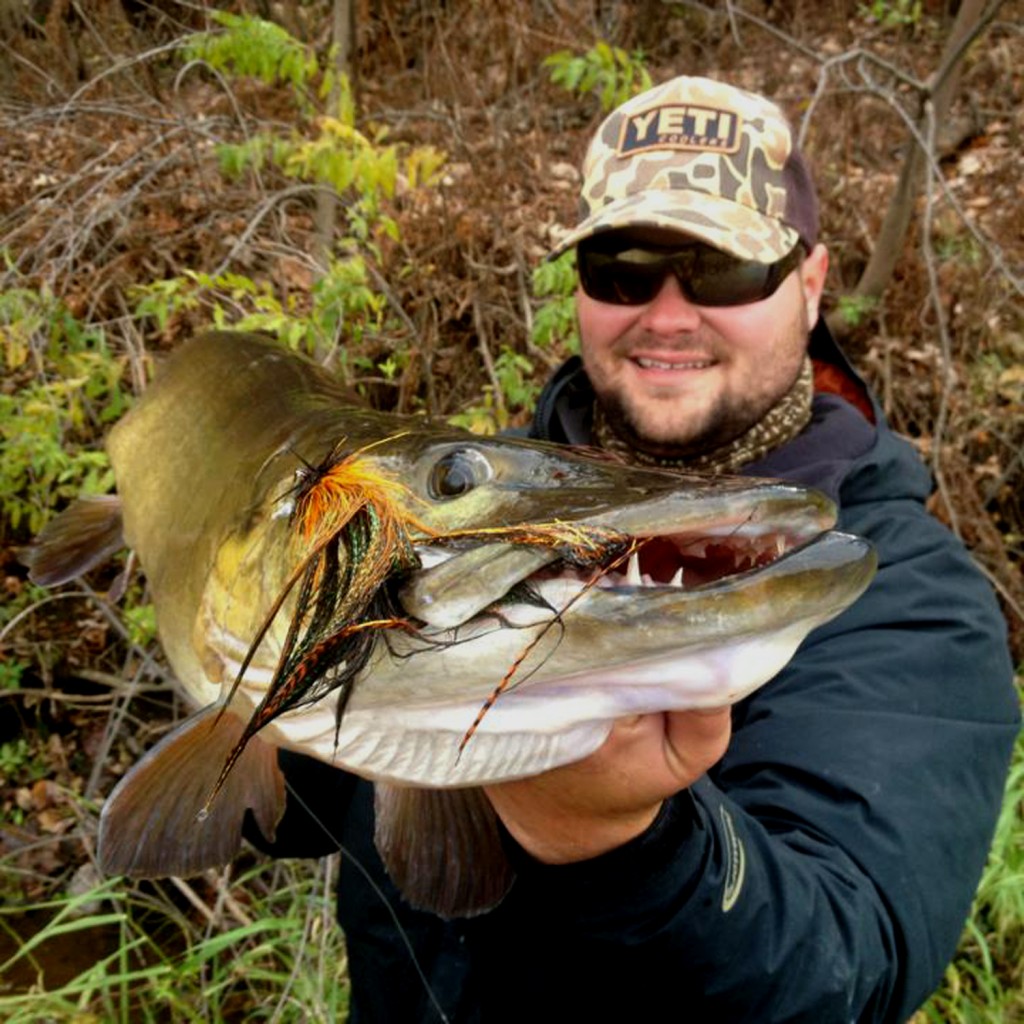
Chris Willen has been musky fishing for well over a decade, from the freestone rivers of the Upper Midwest to the limestone rivers of the Cumberland plateau and most places in between. One of the things he has enjoyed the most is to share the sport of fishing with others. With that, he began his own guide and outfitter service. Chris specializes in hunting wild, native musky in the beautiful lakes, rivers and flowages of northern Wisconsin. A knowledgeable and innovative angler, he can customize a day on the water to match any skill set, from beginning musky fly anglers just getting started in the sport to more experienced anglers looking to sharpen their skills with fresh methods and new approaches. Chris’s guide service offers all-day and half-day float trips on beautiful Northwoods watersheds; he also offers multiple boat trips to accommodate larger groups.


